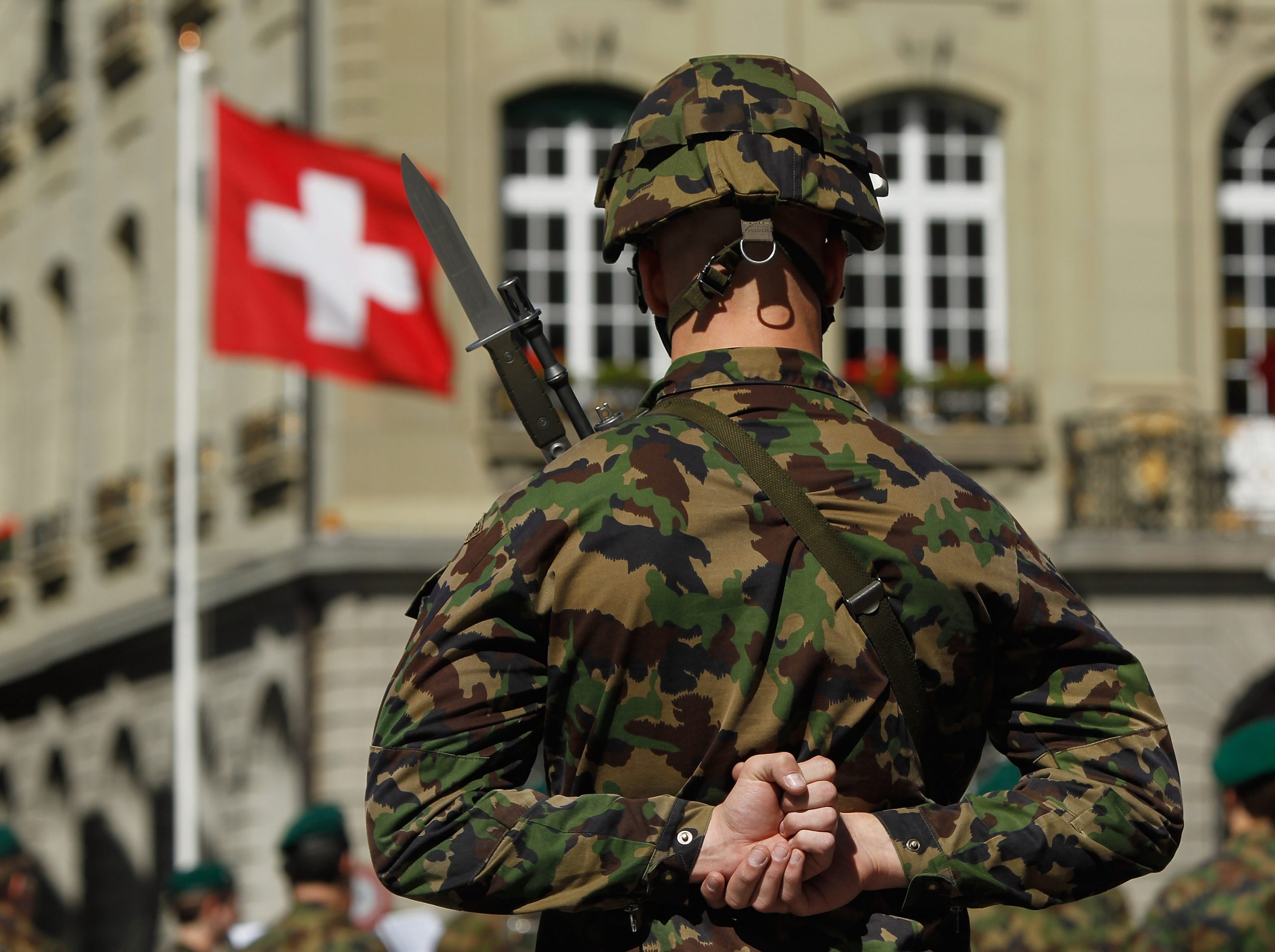Thomas Reisch, a psychiatrist and researcher in Switzerland, was reviewing the rates of suicide in his country when he noticed something unusual. Right around 2004, the number of gun suicides substantially declined. Reisch, who serves as the medical director of a psychiatric hospital just outside of Bern, wondered why.
Switzerland, a peaceful country of about eight million people, is typically regarded for its pristine ski resorts, economic prosperity, and extraordinarily high life expectancy rates — second only in the world to Japan. The country also has a well-established gun culture. It boasts the fourth-highest rate of firearm ownership in the world — roughly 30 percent of all Swiss households contain a gun — trailing only the United States, Serbia, and Yemen.
The Swiss own so many guns because military service is compulsory, and active members are required to store their firearms at home. When members of the military leave the armed services, they are given the option to purchase their guns at a discount. In March 2003, the Swiss army introduced new reforms — titled “Army XXI” — that reduced the number of troops from approximately 400,000 to 200,000 over the period of one year. Reisch speculated that if there were fewer men in the army — and therefore fewer men with access to guns at home — the law could have contributed to a reduction in the suicide rate.
“I saw this drop, and I asked myself, ‘What could that be?’” Reisch tells The Trace. “This was hypothesis-driven, but of course I thought it was the army.”
The link between gun ownership and suicides is well-documented. One sweeping study in the U.S. of 33 years of suicide and gun ownership data from all 50 states found a direct correlation between the two. The higher the gun ownership rate, the higher the suicide rate, the study found. One explanation for the phenomena: Guns are incredibly lethal when compared to other methods of suicide.
In his research, Reisch seized an opportunity to examine what effect gun ownership has on suicide in his country. Since the reduction in active duty forces applied just to men ages 18 to 43, Reisch hypothesized that this group would see a reduction in the suicide rate, while rates among women and people outside this age group would remain steady.
Read Next

10 Essential Facts About Guns and Suicide
It turns out, he was right. Reisch’s study, published in 2013 by The American Journal of Psychiatry, showed that among this particular cohort of men, there were 2.16 fewer suicides per 100,000, meaning about 30 men were “saved” by the reforms. (In 2013, there were 222 total firearm suicides in Switzerland.)
Reisch found that about 75 percent of the men who would have taken their life with a gun did not choose another method of suicide, like poison or hanging. This evidence contradicts a common talking point among gun rights groups: that people intent on killing themselves will simply find another means if they do not have access to a gun.
Research in the U.S. shows that between 5 and 11 percent of people who attempt suicide will go on to kill themselves — but the majority will not.
“It’s quite clear,” Reisch says. “Restricting access to guns saves lives.” (In what may amount to a substantive change in position, the leading firearms industry trade group recently partnered with the nation’s largest suicide prevention organization on an education program intended to reduce the number of gun suicides.)
Reisch’s research wasn’t the first to link changes in military policies to suicides. A 2010 study of the Israeli army, for instance, found that requiring soldiers to leave their weapons on base over the weekend, as opposed to bringing them home, decreased the suicide rate among troops by almost 40 percent.
Reisch’s work may help inform the understanding of growing suicide problem in the U.S. According to the Centers for Disease Control and Prevention, there were a total of 21,334 gun suicides in 2014, up from 16,599 in 1999.
Researchers say that reducing access to firearms — whether by keeping them locked in secure environment, requiring waiting periods, or removing them from households altogether — is an essential strategy to save lives. That’s because suicide is usually an impulsive act: 71 percent of attempts come within the hour of making the decision to complete the act, research shows.
Men are more likely to kill themselves than women, and are much more likely to use a gun. That’s why members of the U.S. military deserve special attention, experts say. In May, the Pentagon released a report that the suicide rate among soldiers was more than twice the national average.
One of the high-profile efforts to prevent suicides in the military is a $50 million study that ultimately created an algorithm to predict which soldiers might be at a high risk for suicide. The algorithm analyzes a variety of data and risk factors, including a service member’s age, gender, and previous history of mental health and psychiatric disorders. So far, it’s effectiveness has been difficult to determine.
To researchers like Reisch, though, there are potentially less sophisticated ways to reduce suicides across the board. “I think [my study] can be easily transferred to any other country,” he says. “The principle is always the same. If you are able to restrict people who can get a gun, there will be less suicides.”
[Photo: Sean Gallup/Getty Images]

